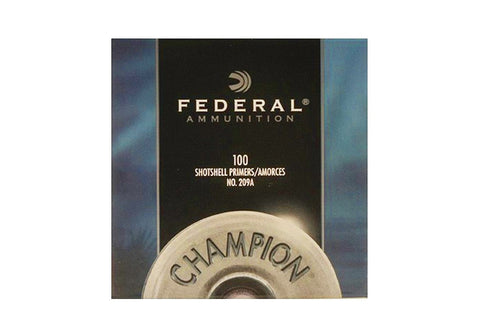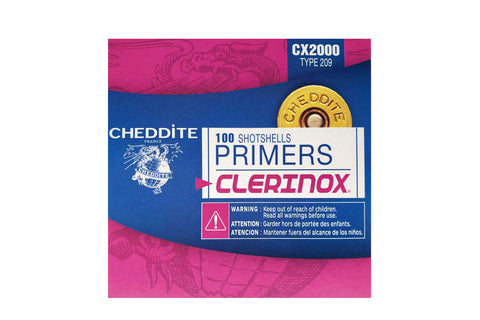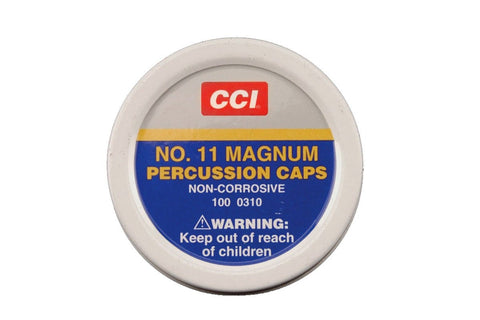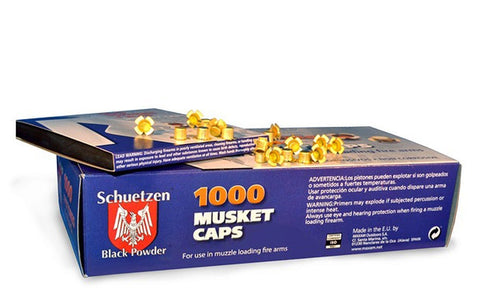Call 1(855) 236-5000

 >
>

Primers, Percussion Caps & Flashpans - What You Need To Know - The Beginners Guide To Muzzleloading - Part 4
<--- Back To Part 3 or Forward To Part 5 --->
When it comes to the ignition of any muzzleloader, using the right ignition source is key to achieving the best performance out of the gun. In this article, we are going to take a dive into the various ignition sources on the market for muzzleloading applications. There are three categories in regards to black powder ignition. The first category will cover primers which include 209 primers and large rifle primers as well as their applications. The second category will cover the various percussion caps offered to the market, and what makes them different from primers. The last category will cover flashpan powders which take the place of caps and primers and will be specific to flintlock shooters.
209 Primers & Large Rifle Primers
Due to the incredible rise in popularity of inline muzzleloading, primers that were once used exclusively in the centerfire world are now among the most popular ignition sources for black powder shooting. Nearly every modern inline muzzleloader on the market uses a 209 primer for the ignition source. The exception would be all traditional style muzzleloaders and also northwest or western ignition muzzleloaders which will use a percussion cap. There are a few high-end models now being produced that use large rifle primers, specifically using the Variflame Ignition System.
The advantage to using a 209 primer or large rifle primer over a percussion cap is that you get a hotter and more consistent ignition temperature. This is important for consistency, accuracy, and overall performance. Additionally, 209 primers are very inexpensive as they are mass produced for shotgun shell reloading.
There is a large variety of 209 primers to choose from in the muzzleloader world. It is important to understand which primers are better for your particular muzzleloader and powder combination. 209 primers are either produced as magnum primers or standard primers. Standard 209 primers excel with loose powders that don't require a higher heat threshold. Triple 7, Pyrodex, or true black powder are a lot easier to ignite and work very well with standard 209 primers.
There can be exceptions to this rule. Winchester Triple 7 209 Primers perform very well with Triple 7 and Pyrodex pellets, despite not being a magnum primer. While we would not recommend using the Winchester Triple 7 209 Primers for the IMR White Hots or Blackhorn 209, they are one of the best choices for Pyrodex or Triple 7!
Magnum 209 shotshell primers are generally considered the gold standard for muzzleloading applications, as they have a higher heat output making them capable of efficiently igniting loose powder and pelletized powder. IMR White Hots and Blackhorn 209 powder require a hotter ignition than normal, so it is crucial to use a Magnum 209 primer with these powders to ensure ignition efficiency and avoid hangfires or misfires.
We have done a considerable amount of field testing to determine which primers are the most consistent across the board and we would highly recommend using any of the three magnum primers shown below. Keep in mind that the Federal 209A Shotshell Primers do not state 'magnum' in the title, however, they still ignite at the same heat threshold as other magnum primers.
| CCI 209 Magnum Shotshell Primers | Federal 209A Shotshell Primers | Cheddite 209 Magnum Shotshell Primers |

|

|

|
These primers will consistently provide the most reliable and accurate shots down range when combined with any black powder or black powder substitute. There are also 209 primers that will be specific for black powder, however, all 209 primers are compatible with a 209 system, regardless of they say muzzleloading or shotgun. While we recommend the three primers listed above, it is still better to have some kind of 209 primer instead of nothing. If you are in a bind and are not able to find these three primers, then it is still good to pick up whatever you can find. It is easier to find a powder that is compatible with a primer, than to try find a primer that is compatible with a powder.
Another ignition style that is becoming more common in the muzzleloading world is the Variflame ignition system. This system enables a muzzleloader to use a large rifle primer for the ignition. You will see this sort of ignition on the CVA Paramount series or with CVA Accura MR-X and LR-X models with the VariFlame conversion kit. This unique system provides a much hotter ignition and is capable of igniting the super magnum charges used in the Paramount muzzleloaders. If you happen to be using a muzzleloader that employs a large rifle primer ignition system, we recommend the CCI Large Rifle Primers. In opposite fashion to the 209 primers, we recommend using the standard large rifle primers and not the magnum primers in the Paramount muzzleloaders.
Percussion Caps
Percussion caps can be thought of as a predecessor to the modern primers that we are familiar with today. These ignition sources require a flat hammer or broad firing pin strike rather than a pointed firing pin to ignite, and they work by being crushed between a percussion cap nipple and the hammer or firing pin.
The three main sizes of percussion caps are #10, #11, and musket caps.
Many people often believe that the terms “percussion cap” and “musket cap” are interchangeable, however, this is not the case. Percussion caps are a general category of muzzleloader ignition and musket caps fall under that category. All musket caps are percussion caps, however, not all percussion caps are musket caps. Musket caps are their own unique size and are bigger and hotter than #11 caps. Below are some photos with side-by-side comparisons to visual the differences.
On the left you can see musket caps and the on the right you can see #11 percussion caps.

Typically, #10 percussion caps are used in black powder revolvers and small pistols such as derringers. Larger caliber single shot pistols and traditional sidelock rifles you will primarily require a #11 percussion cap. In some cases, a traditional side lock muzzleloader will use a musket caps and is typically seen on historical guns such as the 1861 Springfield. As mentioned above, select inline muzzleloader models will use a musket cap ignition that are designed for hunting in Oregon and Idaho. While the aforementioned generalizations are fairly accurate, you will want to make sure you know which percussion cap your muzzleloader needs by checking the user manual for the gun.
Pelletized powder does require a hotter ignition than what most caps can offer, so it is recommended to only use pelletized powder with a 209 magnum ignition. Loose powder such as Pyrodex, Triple 7, and true black powder is highly recommended to use with a percussion cap ignition.
The brands we recommend for percussion caps are listed below:
| RWS | CCI | Schuetzen |
 |
 |
 |
All three brands produce a variety of percussion caps and they all work well. Overall, we personally recommend RWS as the best percussion cap manufacturer. They make very reliable caps that have proven to be the most consistent across the variety of muzzleloaders that we carry.
Keep in mind that Traditions Northwest ignition muzzleloaders are not rated to use Schuetzen musket caps, so it is recommended to primarily use RWS 1081 musket caps in those particular muzzleloaders.
Flash Pans
If you are a flintlock shooter you will need to use an appropriate flash pan powder. The same powder that is used in the barrel is not going to be suitable for the ignition. While you may be able to get the gun to ignite, you will have a considerable delay if you don’t use specially crafted flash pan powder. Delays may create accuracy issues, but can also potential safety issues.
You will need to use 4f black powder, which is made by a select few manufacturers. We recommend Swiss, Goex and Schuetzen brands of true black powder. All three brands manufacture their own variation of flash pan powder and they perform very well.
It is important to note that the 4f powders are true black powder and are not offered in a black powder substitute. You will want to be sure to keep a fire channel or nipple pick on hand, as well as some cleaning supplies to keep the fire channel free of debris. If the fire channel gets plugged you can have hangfires or misfires.
For information regarding which brands of 4f powder to use you can read our previous article (Part 3 of this series).
Ignition Troubleshooting Advice
Troubleshooting your muzzleloader may be contingent on the type of primer or cap that you are using. We have found that the type of primer or cap is often overlooked as a solution for accuracy issues. This is especially true when using a high heat threshold powder with a primer or cap not hot enough for consistency. This can be tricky because the powder may ignite, but because of an inconsistent powder burn, it decreases accuracy due to the ignition not fully being behind the bullet. Since the powder does ignite, it gives the facade that the primer did its job. However, a different primer may tighten up accuracy by allowing the powder to ignite properly and efficiently.
We've found that the majority of primer or cap issues stem from using Blackhorn 209, IMR White Hots pellets, or other pelletized powder with a standard 209 primer instead of a hotter 209 magnum primer. Standard primers are just not hot enough to consistently ignite the aforementioned powders. Another issue can stem from using a magnum primer with a really low heat threshold powder, such as true black powder, Triple 7 FFG or Pyrodex RS. This occurs because the powder ignites too hot, which can cause blow-by around the projectile, as the ignition is too fast and doesn't allow the projectile to fully expand or engage.
We are here for a higher purpose and believe you are too.
You are loved by God. In fact, He sent His Son Jesus Christ to come to earth live a perfect life and die on a cross for our sins. More than that He raised this same Jesus Christ from the dead for our justification, that all who believe in Him should not perish but have eternal life with God.
Romans 3:23: "for all have sinned and fall short of the glory of God,"
Romans 5:8: "But God demonstrates His own love toward us, in that while we were yet sinners, Christ died for us."
Romans 6:23: "For the wages of sin is death, but the free gift of God is eternal life in Christ Jesus our Lord."
Romans 10:9: "that if you confess with your mouth Jesus as Lord, and believe in your heart that God raised Him from the dead, you will be saved;"
Romans 10:13: "for 'WHOEVER WILL CALL ON THE NAME OF THE LORD WILL BE SAVED'."
The joy of salvation:
Romans 5:1: "Therefore, having been justified by faith, we have peace with God through our Lord Jesus Christ,"
Romans 8:1: "Therefore there is now no condemnation for those who are in Christ Jesus."
Romans 8:38-39: "For I am convinced that neither death, nor life, nor angels, nor principalities, nor things present, nor things to come, nor powers, nor height, nor depth, nor any other created thing, will be able to separate us from the love of God, which is in Christ Jesus our Lord."
Scripture quotations taken from the (NASB®) New American Standard Bible®, Copyright © 1960, 1971, 1977, 1995 by The Lockman Foundation. Used by permission. All rights reserved. lockman.org









